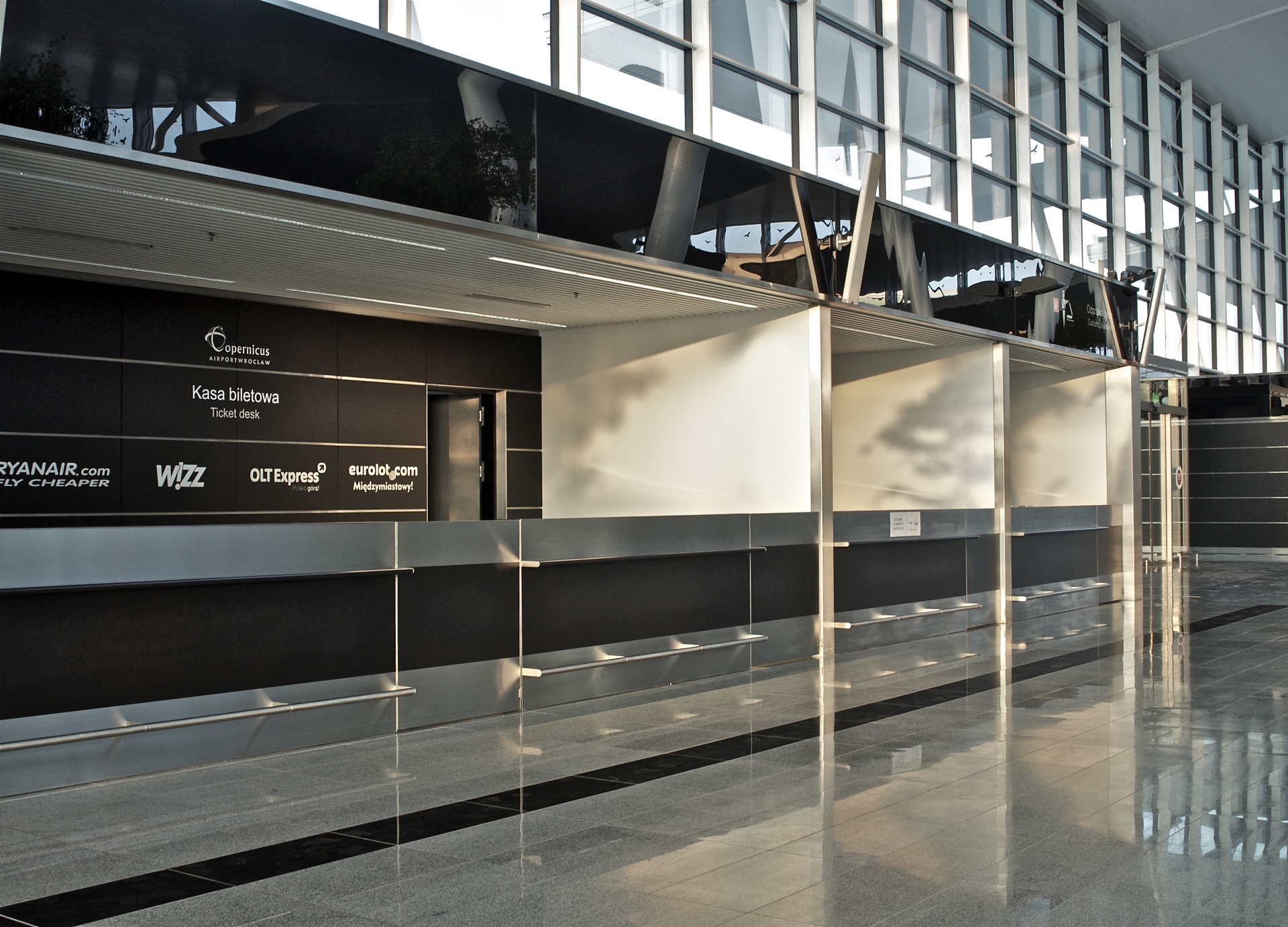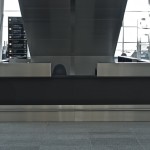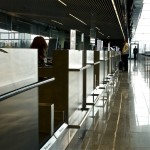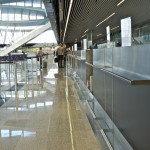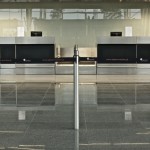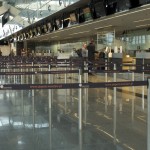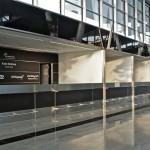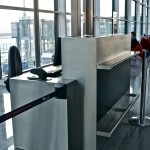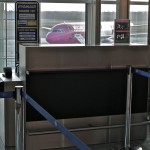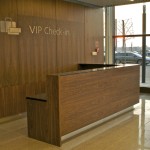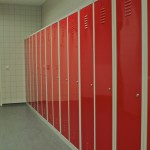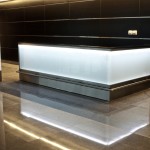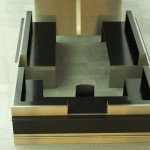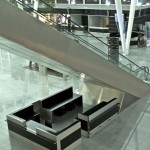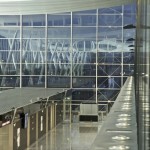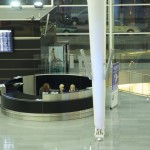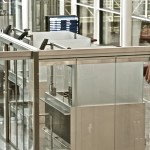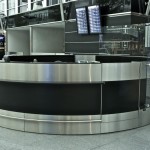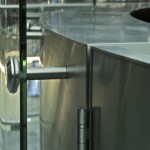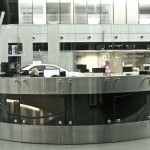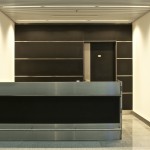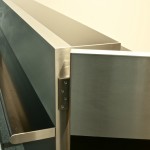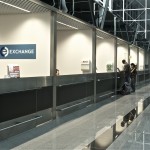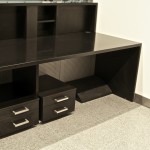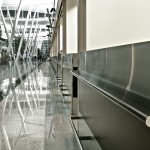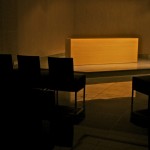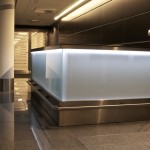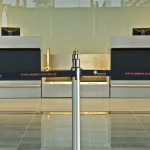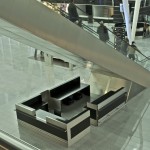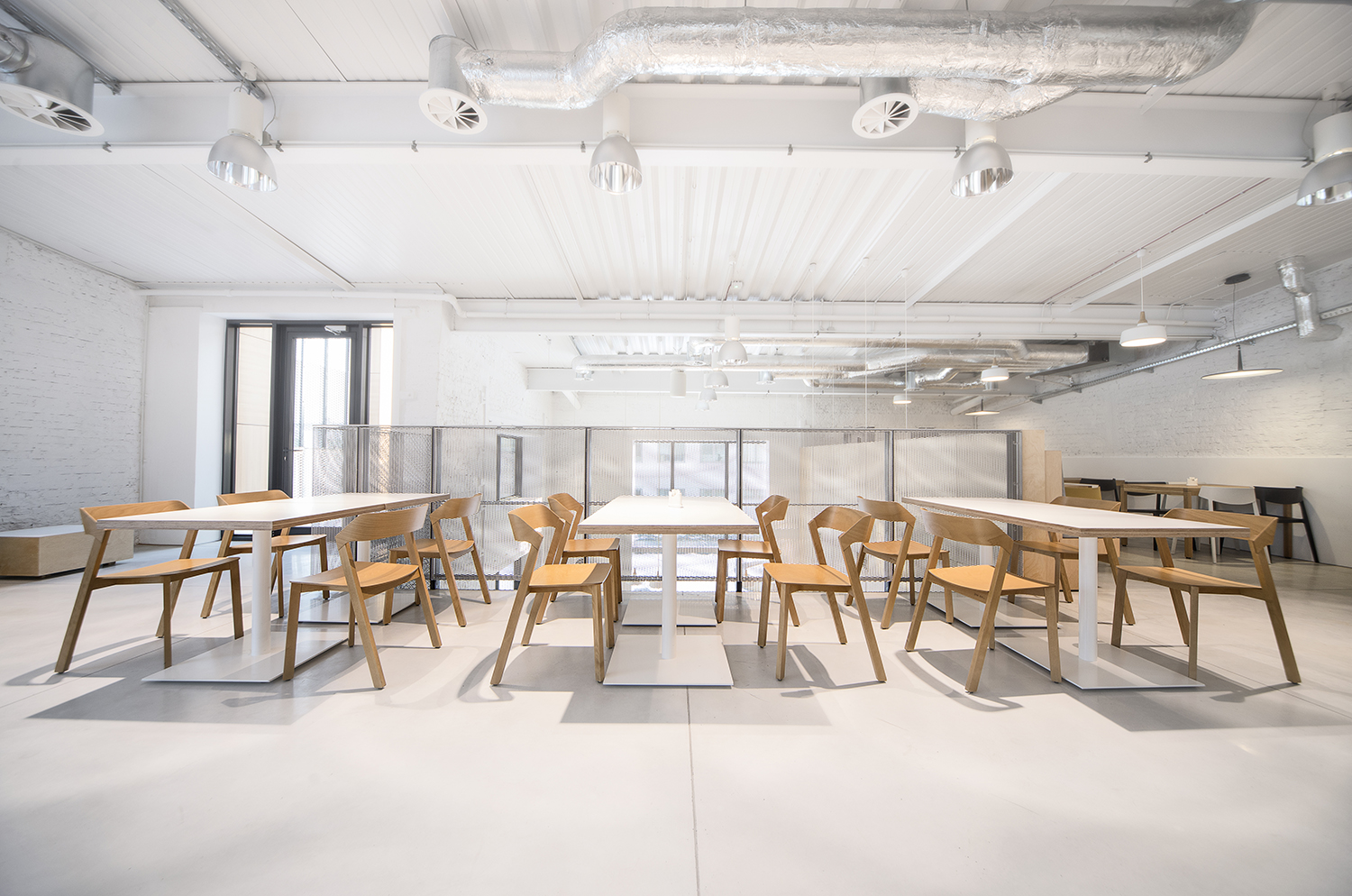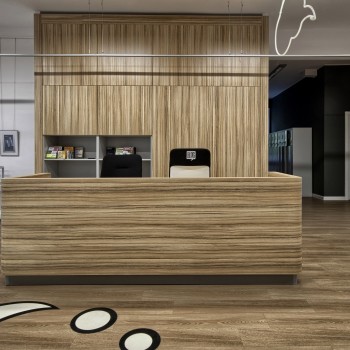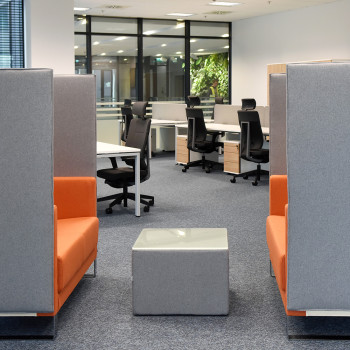The project was jointly executed by our Wrocław Branch and the works were carried out under the leadership of Łukasz Kłak, the Wrocław Regional Director. It should be added that we were hired following the order of a building contractor acting in the capacity of General Contractor of Wrocław Airport. A detailed implementation of the project is provided below.
Why was our company selected for interior design of the airport?
The General Contractor for the investment into the Wrocław Airport had very clearly defined expectations towards its subcontractor. The expectations concerned specific types of furniture designed for passenger transport facilities, atypical and rarely met materials in the Polish market for making such furniture.
These materials included for example:
- Staron conglomerate;
- HPL plates;
- Trespa;
- Stainless ground steel;
- Bent glass;
- Hand-picked veneers (natural veneers).
In addition to delivery of furniture made of the aforementioned materials it was equally important to commit oneself to deliver the whole array of products in agreed quantity. Certainly the contractor’s expectations also referred to the furniture-related experience with interior design projects executed for public facilities with high people flows. This implied, among others, the readiness of the subcontractor to develop relevant design and on its basis to run all efforts in strict compliance with defined technical parameters.
After a whole series of talks between the General Contractor and the candidates that submitted their bids under the competitive procedure, our bid was finally selected. The key success factor was that we met all technical requirements and had expected design and production capacities. At the same time the evaluation criteria of the best subcontractor were matched by the profile of our experience with a fully proven track record. Undoubtedly another important fact was that based on our capabilities we declared directly and without any hesitation the compliance with all deadlines set in the project implementation schedule. It should be noted straight away that for furniture manufacturing we were given three months, whereas the overall assembly and fitting work could last only one month!
Direct Preparatory Phase
Before investment project implementation we organise a technical audit on the construction site. In this case this phase in strict meaning of the word was non-existent. Why? Because in the period designated for determining interior design details – which was in 2010 – the airport facilities did not exist yet. Therefore all technical and interior design issues we discussed during meetings based on documentation provided by the employer (general contractor).
It was nothing out of ordinary. We were prepared also for such contingency. After all such cases are more and more frequent with a fast increase of new construction investment projects e.g. for transport infrastructure; also in the office construction sector. To sum up the design arrangement phase: we managed to complete this phase very smoothly. Meanwhile it implied our readiness to launch quickly the implementation of the works commissioned to us.
Overcome difficulties
Soon after we started our business relationship with the General Contractor it turned out that the execution of the airport construction activities will last longer quite significantly i.e. by one (1) year! What did it mean in practice? Unexpected difficulties.
Despite many difficulties we succeeded in effective reorganization of deliveries of already manufactured and ready furniture and certainly we had to keep them in storage before, which was quite a challenge given other projects run in parallel for other Customers.
This time it was necessary to set new delivery dates, which was dealt with by the General Contractor. We had to harmonize our activities with a modified schedule, what we did seamlessly. At the end of the day we delivered equipment on a current basis and in a phased�out manner to those parts of airport that were already completed. In this way despite technical and work organisation hardships, frequently in the conditions resembling a construction site, we managed to implement our assignment smoothly. This gave reassurance to the General Contractor – especially in the context of difficulties he had to overcome.
Some pieces of furniture had quite sizeable dimensions.
To sum up joint execution…
Several dozen people were involved in the project execution, of which thirty workers dealt with furniture production and directly on the site there were several dozen other workers responsible, among others, for:
- transport,
- assembly and fitting,
- distribution of furniture in accordance with adopted interior design,
- cleaning.
What is our evaluation of this project difficulty? Despite the aforementioned circumstances, we managed to complete the project in line with Customer’s expectations. The joint execution of the investment project was quite a challenge in technical terms, since it covered the production of specific, dedicated, unique furniture, made of exceptional materials. However, it was nothing new for us. Delivery of furniture design to individual order is one of our services for almost twenty years. With regard to project logistics – it was a large project indeed in terms of big quantity of furniture, big dimensions and high weight and numerous delivery deadlines that could not be exceeded. However, in the past we implemented projects on a similar scale, so it was not a challenge beyond our capabilities. Indeed the work required commitment of a high number of people and resources, but we know we are capable of implementing even larger projects in the future.


